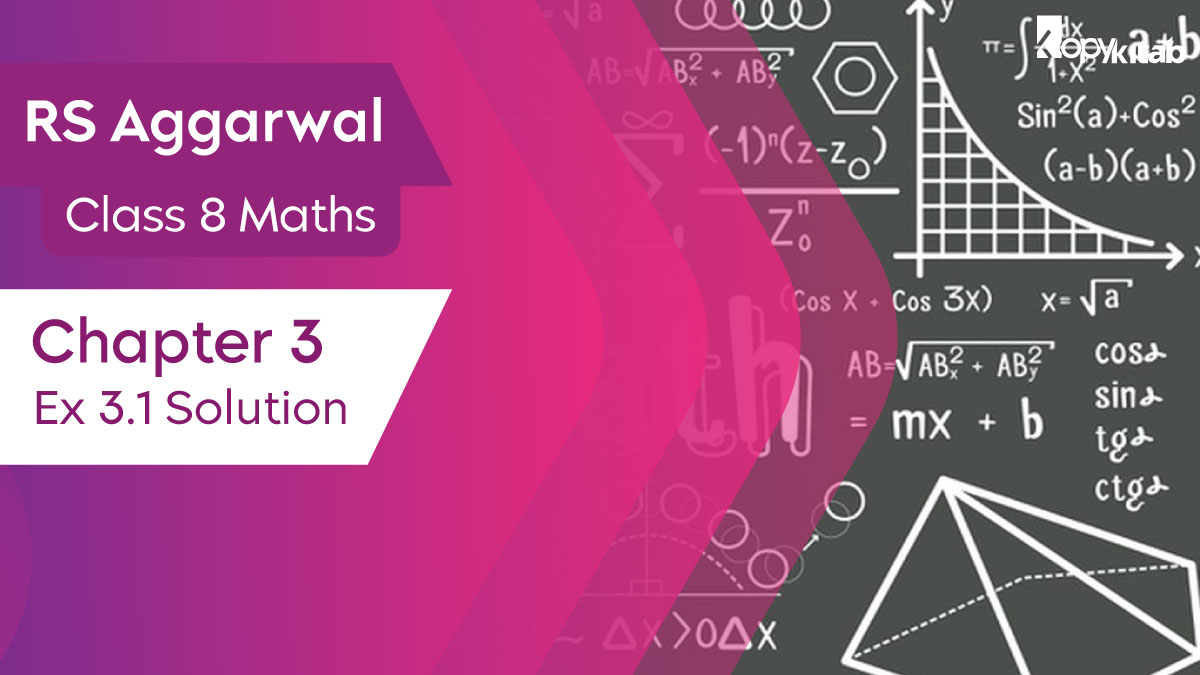
RS Aggarwal Class 8 Maths Chapter 3 Ex 3.1 Solutions: This exercise deals with the basic concepts related to a perfect square & the fundamental explanations of properties of perfect squares. These solutions assist the students in practicing & learning each & every concept as it provides solutions to all questions asked in the textbook. These solutions are organized systematically & cover all solutions to the questions available in this exercise.
In RS Aggarwal Class 8 Maths Chapter 3 Ex 3.1 Solutions, the students find simplified & explained solutions to the difficult problems that make them learn & study much more conveniently. The top Mathematics faculty members have solved the exercise to assist the students with their exam preparation so as to secure good marks in Class 8th Maths final exams. These solutions enable them to clear doubts quickly & also learn the topics more effectively. These solutions are perfect study material the assists the students to understand this exercise in a better way.
Access RS Aggarwal Class 8 Maths Chapter 3 Solutions PDF
Download RS Aggarwal Class 8 Maths Chapter 3 Ex 3.1 Solutions
RS Aggarwal Class 8 Maths Chapter 3 Ex 3.1 Solutions
Important Definition for RS Aggarwal Class 8 Maths Chapter 3 Ex 3.1 Solutions
- Perfect square
A perfect square is a number that can be expressed as the number of two equal integers. The students will get a perfect square when they multiply two equal integers by each other.
For example: 5 x 5=25
25 is a perfect square because they are multiplying two equal integers (5 & 5) by each other.
It can also be expressed as 5 x 5 as 52 which is known as the term perfect square.
- Properties of perfect squares
Here are some properties of perfect squares:
1. Property 1: Numbers ending in 2, 3, 7, or 8 is never a perfect square but all the numbers ending in 1, 4, 5, 6, 9, 0 are not square numbers.
2. Property 2: A number ending in an odd number of zeros is never a perfect square.
3. Property 3: The square of an even number is always even.
4. Property 4: The square of an odd number is always odd.
5. Property 5: The square of a proper fraction is smaller than the fraction.
6. Property 6: For every natural number n, we have (n + 1)² – n² = (n + 1 + n)(n + 1 – n) = {(n + 1) + n}. Thus, {(n + 1)² – n²} = {(n + 1) + n}.
7. Property 7: For every natural number n, we have the sum of the first n odd numbers = n²
8. Property 8 (Pythagorean Triplets): Three natural numbers m, n, p is said to form a Pythagorean triplet (m, n, p) if (m² + n²) = p². For each natural number m > 1, we have (2m, m² – 1, m² + 1) as a Pythagorean triplet. For instance: Placing m = 4 in (2m, m² – 1, m² + 1), the students will get (8, 15, 17) as a Pythagorean triplet.
Know more at the official website.
